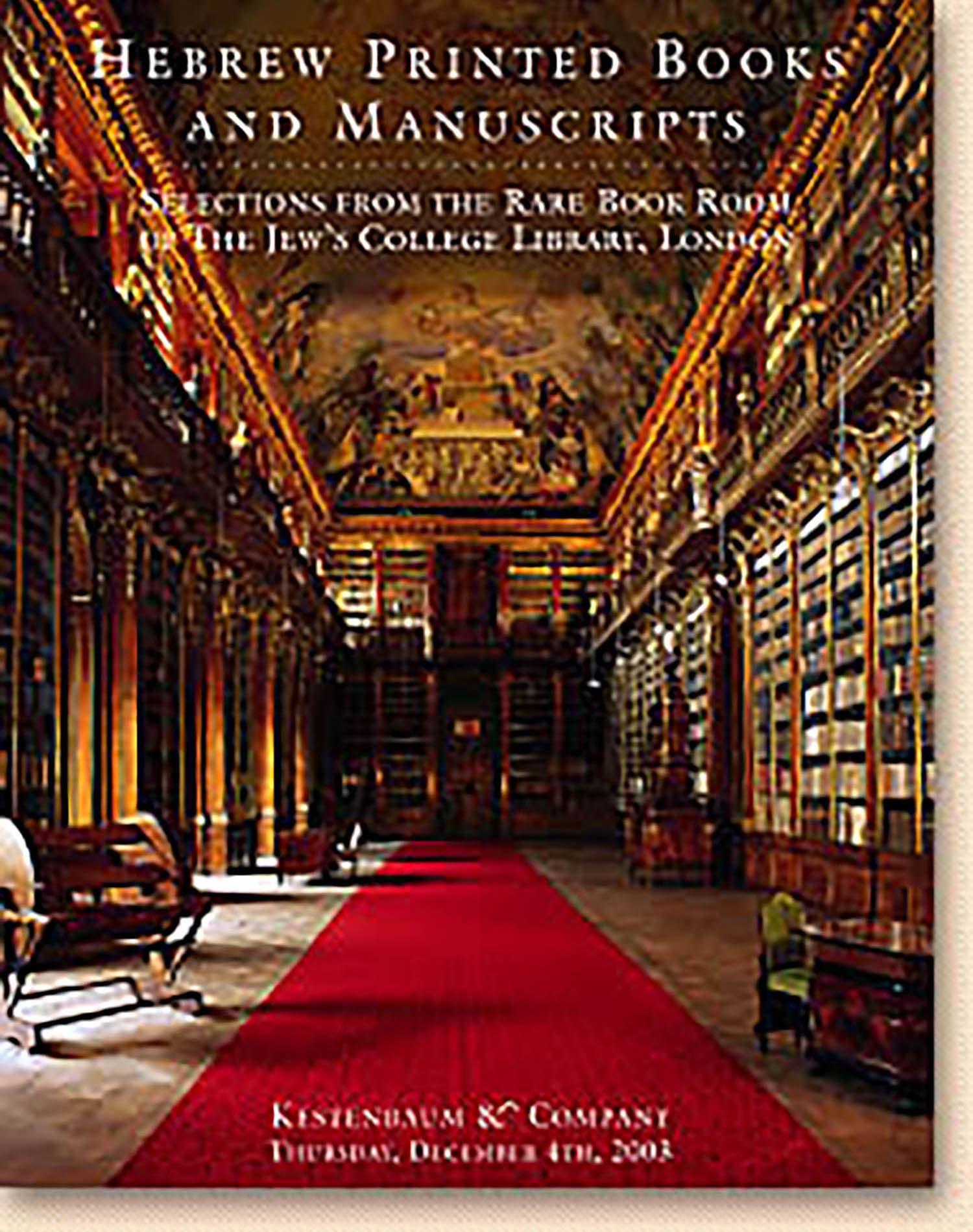- PROPHETS AND HAGIOGRAPHY). Sefer Ha- magid with commentary by Rashi and Agudath Shmuel by Shmuel B. Moshe Dlugatsch plus aYiddish translation.

AUCTION 21 |
Thursday, December 04th,
2003 at 1:00
Kestenbaum & Company Holds Inaugural Auction of Hebrew Printed Books & Manuscripts at Their New Galleries
Lot 49
(BIBLE,
- PROPHETS AND HAGIOGRAPHY). Sefer Ha- magid with commentary by Rashi and Agudath Shmuel by Shmuel B. Moshe Dlugatsch plus aYiddish translation.
Amsterdam: Caspar Steen 1699-1700
Est: $1,500 - $2,000
PRICE REALIZED $4,000
RARE, COMPLETE, MINIATURE COPY OF THIS UNUSUAL COMMENTARY. The printer, Caspar Steen was a ”unique phenomenon in Amsterdam Hebrew printing...he was the only non-Jew who ever had an independent printing house which only produced Hebrew books... The most remarkable feature of his editions is the small pocket size and the use of extremely small types.” (Fuks)
R. Haim Liberman,the great bibliographer, librarian and secretary of the Lubavitcher Rebbe, R. Yosef Yitzchak Schneerson, wrote a fascinating article with the cryptic title “Al Hagah De-R”A” concerning this particular edition and commentary. (Ohel Rachel, vol. 1 pp.310-329). This commentary which is supposed to explain difficult passages in Rashi is not concentrated in one place as a separate commentary, but is scatterd throughout Rashi’s entire commenary on the Bible. The author states that he inherited many manuscripts from his ancestors( he states that he is a descendant of R. Moshe Isserles (Rama) of Krakow, he also mentions names of well known rabbis from Poland and Lithuania). He lists names of six (otherwise unknown) sources including the mysterious R. Ovadia Ha-Navi. According to Rabbi Liberman, this commentary contains many highly interesting, original comments, some of which he labels as “curiosities” and anti-Christian in nature. He suggests that they should all be collected and published separately with a proper analysis. He shows how many of these comments crept into later editions with some chopped up, unintelligible versions even existing in standard editions to this very day (citing a number of examples). The publisher of the folio size Wilhermersdorf edition states that he included it in large print in his edition. But Liberman states “it may be good for the eyes but is heavily censored, missing some interesting key passages” Only this miniature Amsterdam edition has the complete set of interpolations. The present copy is complete also in the fact that it contains the uncensored anti-christian passage missing in the censored Yivo Copy, (the Chabad library copy and our copy contain all the anti- Christian elements of this passage in Ezekiel chap. 27, verse 1; see Ohel Rachel p. 316 for a comparitive illustration of both copies)
What Liberman does not elaborate on, is the interesting travelogue in the author’s introduction listing numerous countries he visited including Arab countries near the “mountains of darkness” (Ethiopia?) where he met 80,000 people from the tribe of Benjamin who spoke Hebrew “as we Ashkenazim” (!) who settled there after the destruction of the first Temple. They were independent until the Arabs conquered them 300 years ago. He mentions other cities and names of Rabbis that he visited including a place where they showed him a tower supposedly built by Cain, the son of Adam(!) Plus other piquant details which cannot be enumerated in a short description in an auction catalog.
